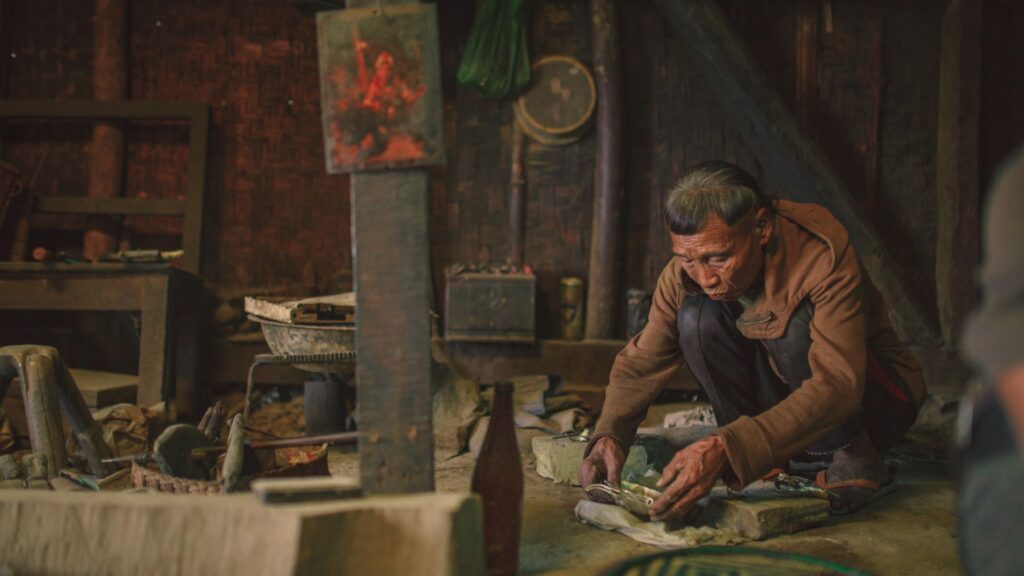
When we think of modern nations, the first image that comes to mind is one of rigid, impenetrable borders and clearly defined boundaries. But what if we told you that there are places in this world where the very definition of borders is blurred, and where life flows peacefully beyond the strict notions of nationhood?
Nagaland, in India’s northeast, is known for its vibrant tribes and rich cultural traditions, deeply rooted in collective identity. Many of its villages lie along the international border, naturally facilitating cross-tribe exchanges and shared ways of life. For the people here, the idea of a “nation” is not the primary marker of identity. Instead, their belonging is firmly anchored in the collective identity of their tribe, which transcends man-made boundaries.
And it is within this context that one of the most fascinating villages emerges — Longwa
Longwa lies in the remote Mon district of Nagaland, right on the Indo–Myanmar border. Sitting at an altitude of around 1,200 meters above sea level, this frontier settlement is surrounded by rolling hills, dense forests, and misty horizons that give it an almost otherworldly charm.
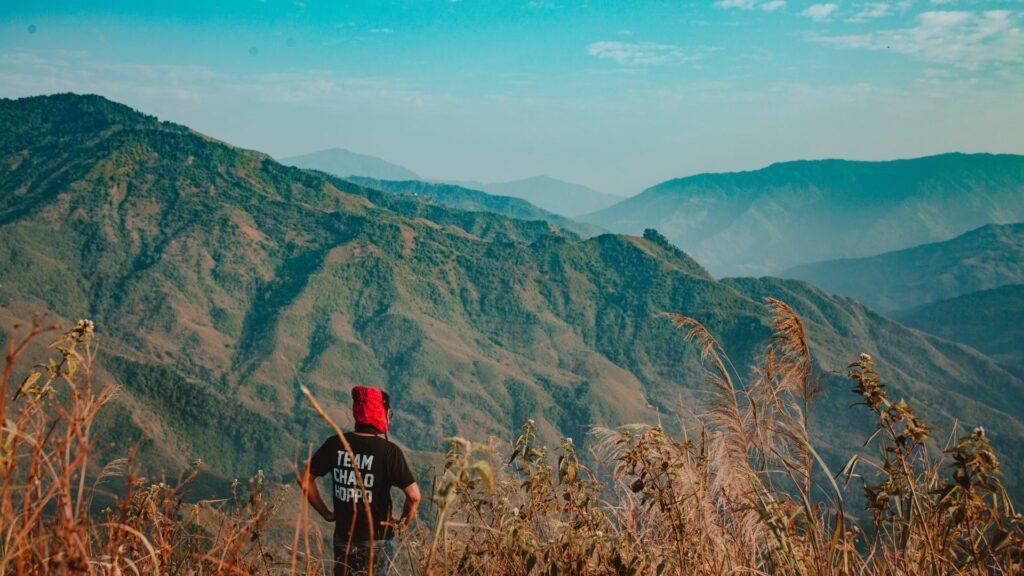
The border here is unlike any other. An international boundary line quite literally cuts through the village, and perhaps the most striking example of this is the Angh’s house, the residence of the tribal chief, which sits with one half in India and the other in Myanmar. It’s a living reminder of how arbitrary borders can be, and how communities in Longwa continue to exist seamlessly across them.
Longwa is home to the Konyaks, one of Nagaland’s major tribes and the largest in numbers, long celebrated for their valor and fierce warrior spirit.
You may have heard of the Konyaks as the tribe that practiced head-hunting until the 1960s. This ritual was once tied to bravery, demonstrations of strength, territorial power, and fertility. With the arrival of Christian missionaries in the late 20th century, this practice gradually disappeared. Christianity took root within the tribe, but many aspects of their cultural identity continue to live on through their traditions, folklore, and festivals.
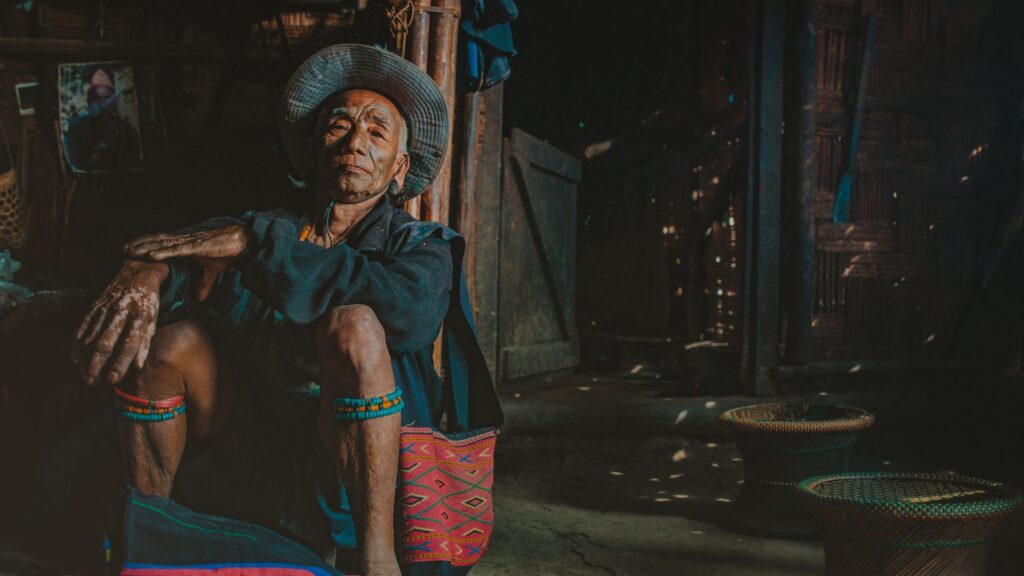
On a visit to Longwa, you can still encounter living traces of this heritage, which add a fascinating depth to the experience. Elders with facial tattoos, once earned after a successful headhunt, remain as powerful storytellers of the past. When approached with reverence and sensitivity, meeting them offers a rare window into the cultural fabric of the Konyaks.
You can also admire the intricate wooden carvings and giant log drums housed in the morung (youth dormitory), or immerse yourself in the vibrant celebrations of Aoleang, the Konyak New Year festival, where warrior traditions are remembered through dance, song, and community feasts.
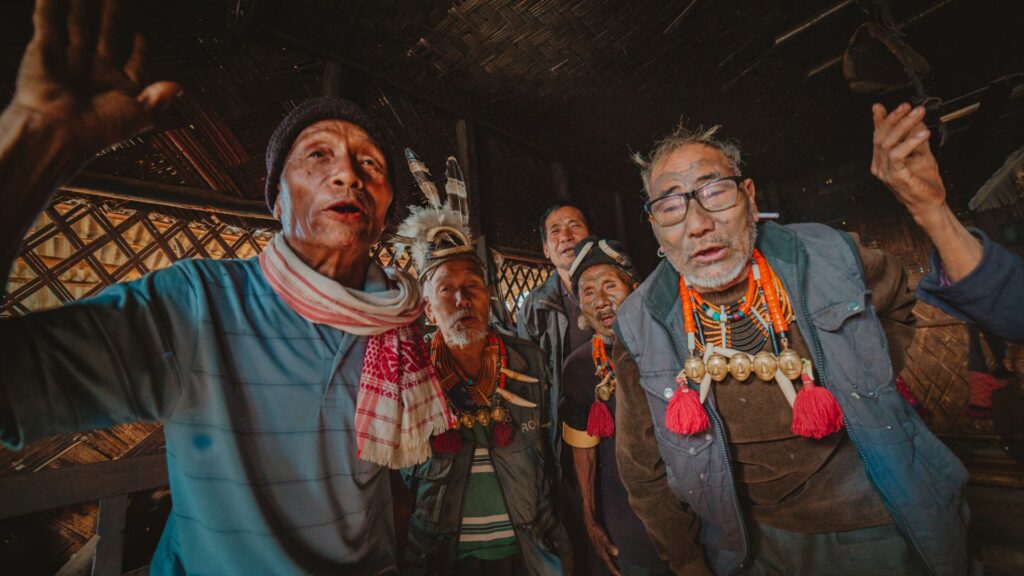
The people of Longwa live a truly unique life, shaped by their dual identities rooted on both sides of the Indo–Myanmar border.
Daily life here flows effortlessly across boundaries. Picture this, villagers farm on the slopes of Myanmar, shop in Indian markets, and attend school or church depending on convenience. For decades, this was possible because many residents held a sense of dual belonging, supported by the Free Movement Regime (FMR), which allowed unhindered movement within 16 kilometers of the border. It’s not unusual to hear a villager remark with pride, “Our kitchen is in India, but our farm is in Myanmar.”
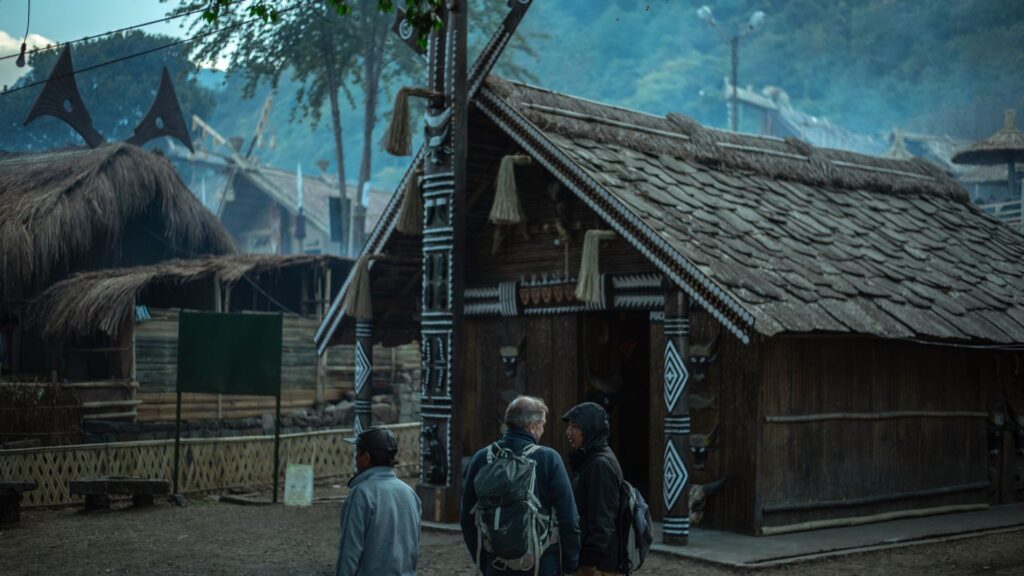
This experience comes alive in a visit to the Angh’s house, perhaps the most symbolic landmark of Longwa. The house of the tribal chief quite literally straddles the international border, with one half in India and the other in Myanmar. Even the chief’s family is divided across the two nations, embodying Longwa’s seamless dual identity.
As a result, this borderless way of life also shapes the village’s social fabric. Weddings, kinship ties, and festivals are celebrated freely across both sides, while the question of nationality remains, at best, an afterthought.
Life in Longwa is deeply rooted in tradition yet gently adapting to change.
The local cuisine reflects the village’s rich heritage, with smoked pork, rice, bamboo shoot dishes, and locally brewed rice beer forming the staples of daily meals.
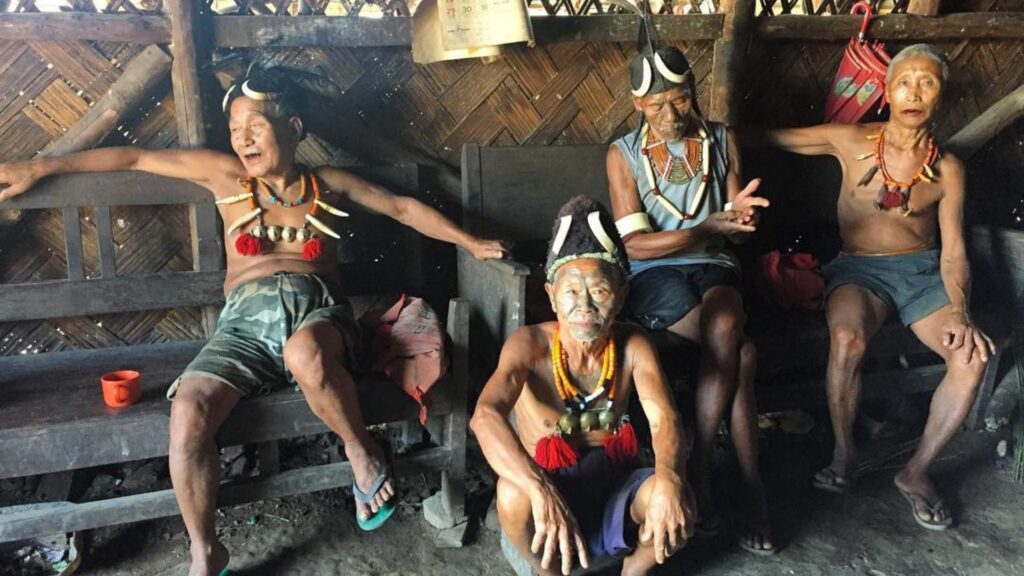
The Konyaks are also skilled artisans and gunsmiths, known for their woodwork, bead jewelry, and the crafting of traditional weapons, skills that have been passed down through generations. Festivals remain central to community life, especially the vibrant Aoleang festival in April, which marks the arrival of spring and the Konyak New Year with dances, feasts, and re-enactments of warrior traditions.
While roads, mobile networks, and tourism are slowly transforming life in this remote border village, Longwa continues to retain its proud frontier identity, where modernity and heritage coexist side by side.
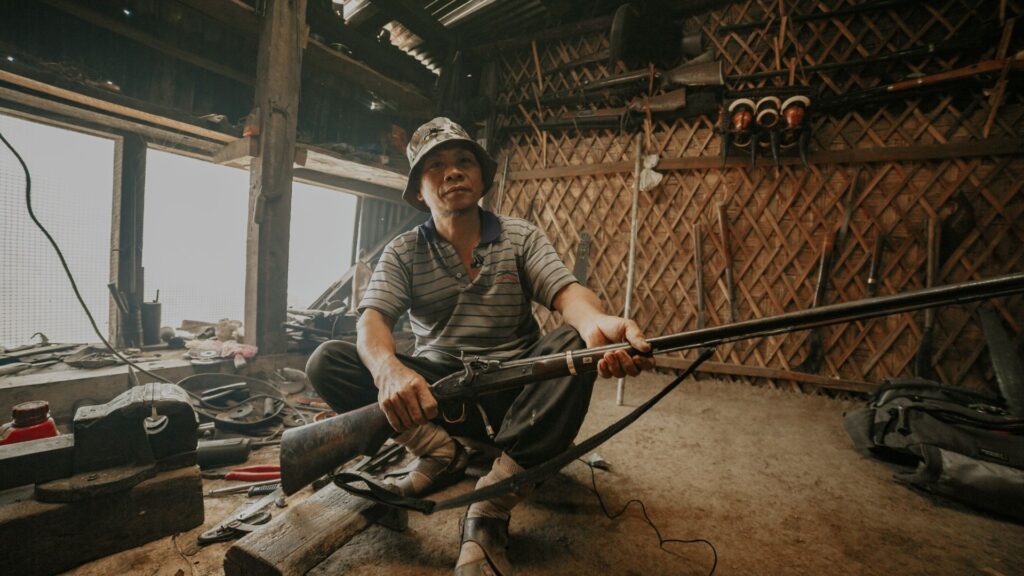
The ideal time to visit Longwa is between October and April, when the skies are clear and the weather is pleasant. After the monsoon rains, the roads are in better condition, making travel easier. If you want to experience the village at its most vibrant, plan your trip around the Aoleang festival in April, the Konyak New Year, when dances, feasts, and traditions bring the community together in full color and spirit.
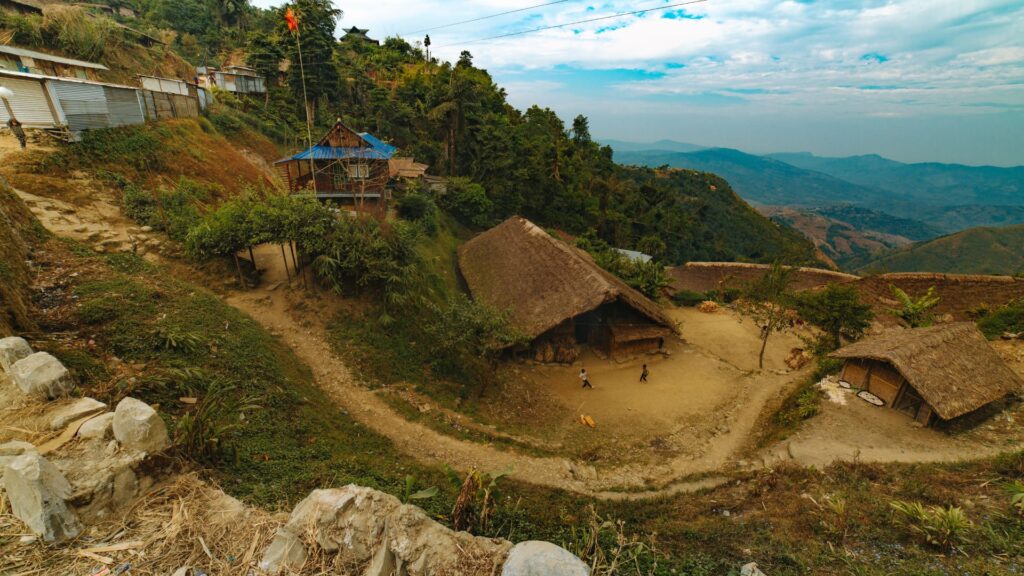
The journey to Longwa is as much a part of the experience as the destination itself. The most convenient way is to begin in Assam, with a flight to Jorhat, the nearest airport. From Jorhat, travelers make their way by road to Sonari, a small town near the Nagaland border. From Sonari, shared taxis and jeeps are available that head towards Mon town, the district headquarters. The final leg from Mon to Longwa is a scenic 42-kilometer drive along winding mountain roads, offering glimpses of rolling hills and remote villages before finally arriving at this extraordinary border settlement.
Staying in local homestays is the best way to experience Longwa. These not only provide comfort but also offer an authentic window into Konyak life, giving you the chance to share meals, stories, and traditions with the villagers themselves.
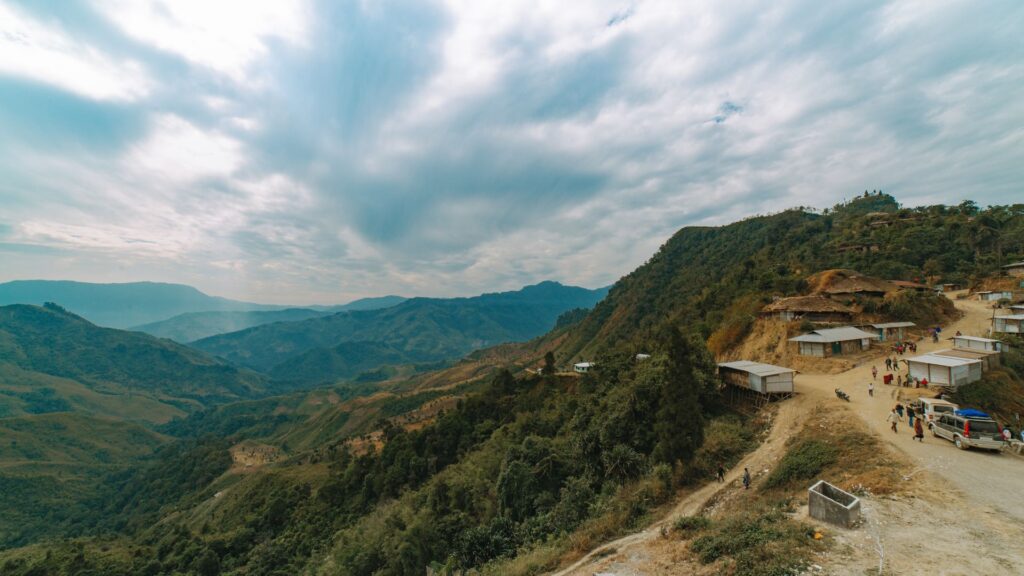
A visit to Longwa is most rewarding when approached with openness, respect, and sensitivity. Always ask before taking photographs, respect cultural spaces such as the log drums and morungs (youth dormitories), and avoid pressing on sensitive political issues. A little courtesy goes a long way here, ensuring that your trip is not just memorable for you, but also respectful to the people who call Longwa home.
A visit to Longwa offers a rare glimpse into a living story of resilience, where collective memory and identity continue to defy and redefine the very idea of borders. For travelers, Longwa all about witnessing how communities thrive in the in-between spaces of history and geography, where belonging is rooted as much in kinship as in territory.
Longwa invites visitors to experience life up close, with reverence and respect, a journey best suited for those who value slow travel and cultural immersion. It is a place that encourages you to listen, observe, and engage with traditions that are alive and evolving, offering an intimate connection to the people who call this borderland home.
To step into Longwa is to enter a world where countries share not just land, but life itself, prompting us to rethink what borderlands mean and how belonging is defined.
If this resonates with you, join us on our curated set departure, “Of Makers Myths and Memories” — a three-state journey that immerses you in the life of three remarkable tribes of Northeast India: the Apatanis in Ziro, the Mising in Majuli, and the Konyaks in Mon and Longwa. Designed for those who wish to travel slow and look deeper, this experience unravels the unique social and cultural fabric of Northeast India, which gives the region its distinctive identity.

Samiksha Jain is a writer who loves exploring the intersections of history, culture, and media, and how they shape the way we see the world. She has worked across creative content and audience insights in the media industry. These days, she’s soaking in the quiet joys of slow living in North-East India while working as a content executive with Chalohoppo.
Yes. Indian tourists require an Inner Line Permit (ILP) to enter Nagaland, which can be obtained online or from Nagaland government offices in Dimapur, Kohima, and Delhi. Foreign nationals require a Protected Area Permit (PAP).
Yes, Longwa is generally safe for travelers. The villagers are warm and welcoming. However, as with any border region, it’s best to remain respectful, avoid wandering near restricted areas, and always carry valid ID.
A minimum of 2–3 days is ideal, one for the scenic journey from Mon town and at least a full day in Longwa to explore the village, meet the Konyaks, visit the Angh’s house, and soak in the borderland atmosphere.
Longwa does not have hotels. The best option is local homestays, which are simple but comfortable, and give you a chance to share meals, conversations, and traditions with Konyak families.
Since Longwa is remote and logistics can be tricky, it’s best to plan with the help of local travel companies who know the terrain and community. ChaloHoppo offers immersive itineraries that are guided by locals, making the experience more grounded, culturally sensitive, and hassle-free.